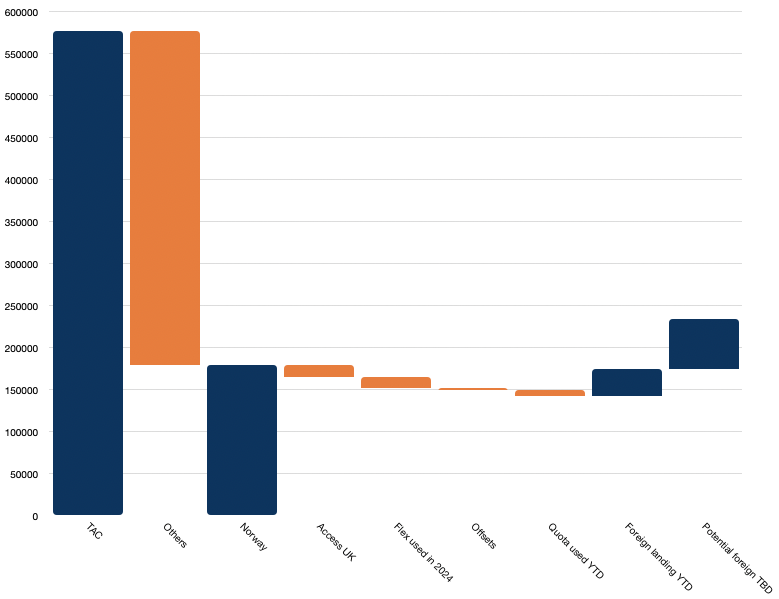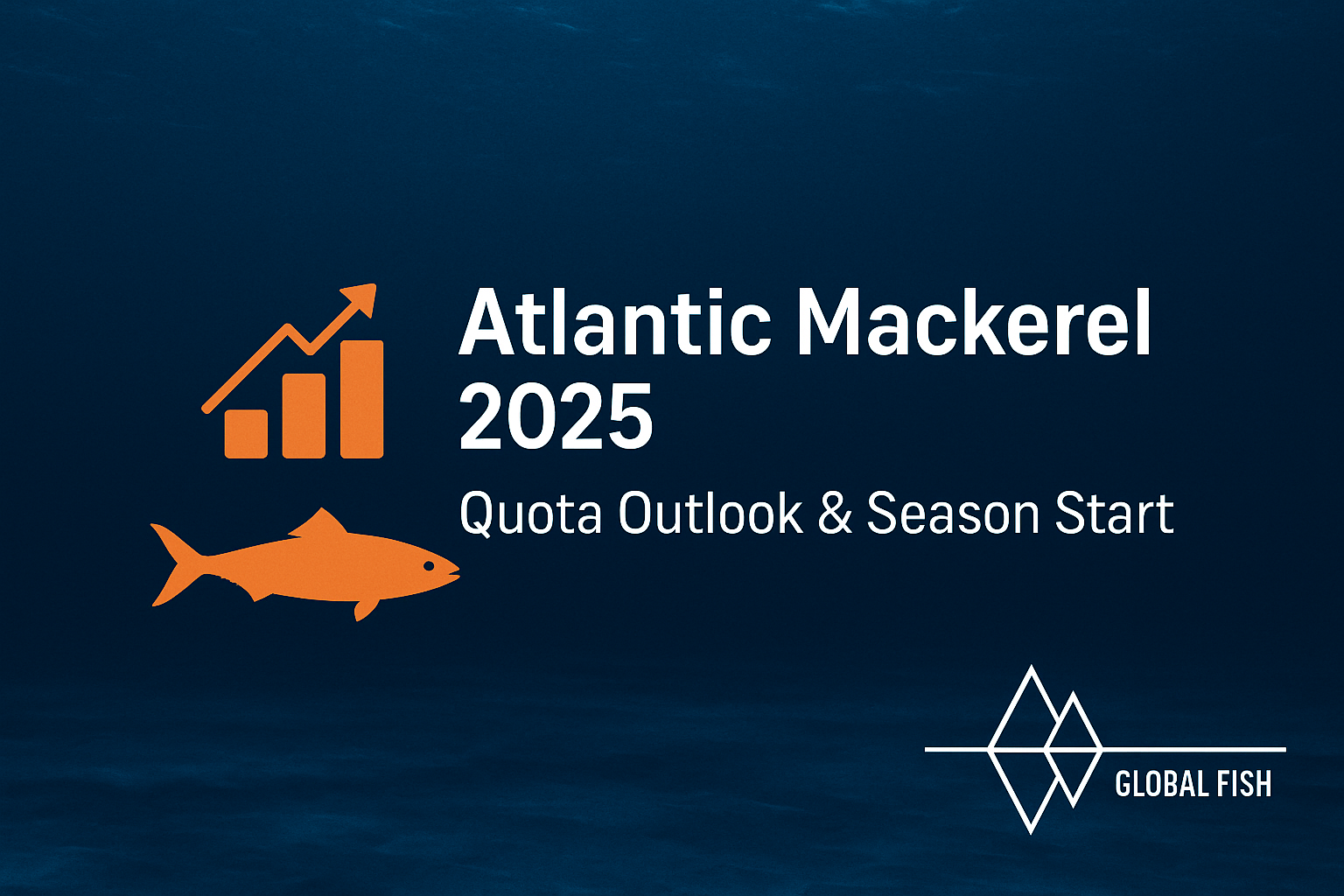As the 2025 mackerel season approaches, Norway's pelagic fleet faces a season shaped by lower quotas and careful management following last year's strong catches. According to Norges Sildesalgslag, the Norwegian mackerel quota for 2025 has been set at 165,298 tonnes, a reduction of about 22% compared to 2024. As of mid-July, 137,560 tonnes remain available across all fleet groups.
Ringnot Fleet Outlook
For the ringnot fleet specifically, the remaining quota stands at 97,510 tonnes, distributed among 69 vessels. With average landings of 600-700 tonnes per trip, this suggests approximately 140-160 trips (2-3 per vessel) will be required to exhaust the quota, assuming stable fishing conditions.
Coastal Fleet Overfishing Adjustment
In 2024, the Norwegian coastal fleet exceeded its allocated mackerel quota by almost 5,000 tonnes. This overrun has resulted in reduced individual vessel quotas for 2025, although the impact is relatively modest compared to the overall national quota.
Season Timing and Fleet Plans
A recent fleet survey by Sildesalgslaget indicates that roughly two-thirds of the fleet plans to start fishing during the first half of August, while the remaining third expect to wait until the second half. This is slightly earlier than some previous years, likely influenced by concerns about stock availability and market timing.
Last Year's Catching Trends
The 2024 autumn season was marked by strong catches, particularly in September and early October. Weekly landings to Norway peaked above 40,000 tonnes in mid-September. Despite some weather disruptions in late October, the season ended with above-average catches, particularly in the coastal fleet segment.
Outlook for Autumn 2025
Despite lower quotas, the 2025 mackerel season looks set to begin in early August with solid prospects for the ringnot and trawl fleets. While tighter coastal quotas and international negotiations add complexity, steady demand and biological signals suggest another active autumn for Norwegian mackerel fishermen.


